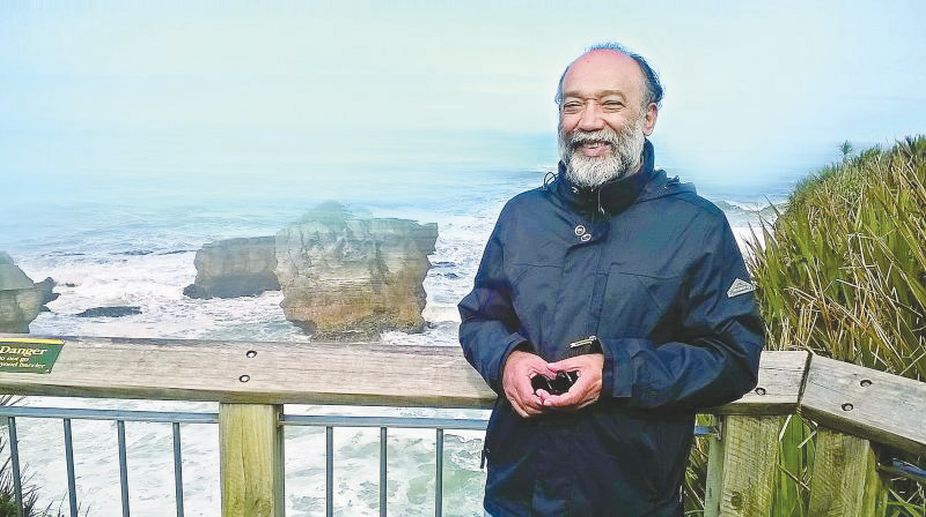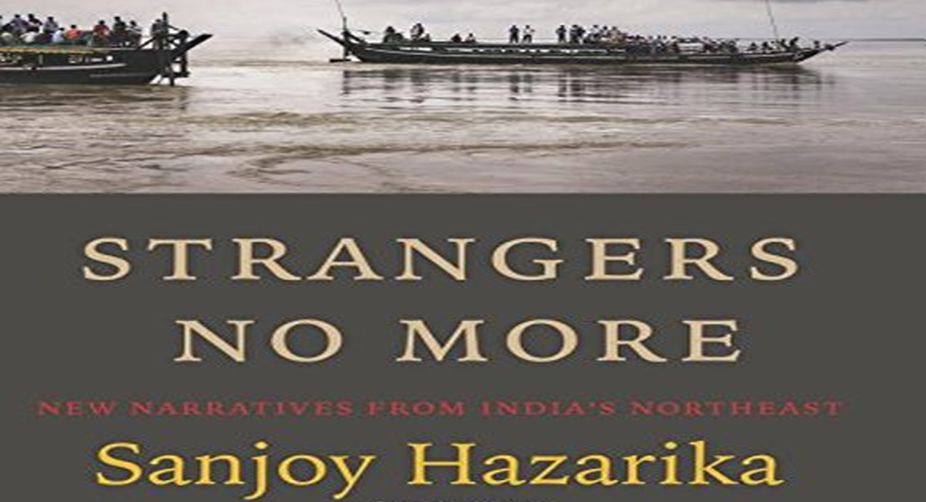Union Ministers, former Chief Minister compete in Northeast in first phase of election
Among the contenders, Union Minister Kiren Rijiju stands as a formidable force, vying for the Arunachal West seat.
Strangers No More is hard reading, backed by the slow despair of most of the stories — a 15-year-old girl shot crossing a barbed wire fence between Bangladesh and West Bengal en route to her own wedding. The fact is that a legacy passed down by the British has continued 70 years after Independence with little or no mitigation of brutality and no room for the people of the North- east in the heart of India… A review

Sanjoy Hazarika
Sanjoy Hazarika’s is a hard book to read. Possibly because the initial chapters highlight the meaningless brutality of the Armed Forces Special Powers Act.
The AFSPA allows the army absolute freedom to do almost anything and get away with it and it was the fallout of the arbitrary way in which the borders were drawn up by the British and passed down through Independence.
It was felt that the hills and the plains could not be separated whereas in reality there was no real connect between the hill folk and the plains dwellers. “… It is on the cusp of that irresolution (of precise territoriality) that many of the North-east’s internal problems lie.” Hazarika writes.
Advertisement
He talks about Bordoloi whose name most people do not know, who fought for the creation of Assam. There was also the issue of the Nagas who had their villages scattered all over the hills and so laid claim to different parcels of land. Naga was very often pitted against Naga and their incursions extended to other states like Manipur.
Against these diverse narratives were the Indians who did not relate to North-easterners at all, labelling them Chinese for the most part or non-Indian. In an earlier book Hazarika refers to the fact that North-easterners refer to people beyond the borders of Bengal as strangers in the mist. There are very few links between the hills and the greater part of India, though Tripura has been successful in banishing the AFSPA.
Hazarika describes the effects of the AFSPA starting with Manipur and the shooting of Manorama, leading on to the tale of a 12-year-old dragged from his verandah and beaten and shot with his family locked up and able to watch it all helplessly from a window. He also mentions Irom Sharmila’s political naiveté that led her to losing her election.
Each state has different narratives, though the Nagas are probably the most complicated. The different tribes were against anyone who was for India, even their own people, and they went down in history for mooning Jawaharlal Nehru.
The Naga quest for a homeland is similar to the situation that used to dominate in Mizoram, though the latter state now has a troubled kind of peace about it. However, the talks between the two Naga clans of T Sakhrie and Dollie that ended in an apology for Sakhrie’s murder from the Dollie is a small ray of hope in a long history of strife and Nagaland deserves the space that Hazarika gives it.
Now young North-easterners are aware that the rest of the country is moving ahead while their part of India lacks infrastructure, resources, basic needs and understanding — what was written up in the Shukla Report of 1996 still remains true — and therefore unless they migrate they will remain lost in the past.
Hazarika describes some of their experiences both happy and unhappy depending on the circumstances — poets, writers and singers are making a reputation, even, like the Shillong Chamber Orchestra, performing in front of Obama and the Pope.
Though the media remains full of the harassment of North-easterners in Delhi and the other Northern states, the problem is, Hazarika writes, that most Indians are lumpen with no understanding of anything except mob violence.
Hazarika is now head of the Commonwealth Rights Initiative in India but his work in the North-east goes back a long way. From his narrative he seems to imply that he was instrumental in putting together talks with the NSCN chiefs Isak Chisi Swu and Thuingaleng Muivah whom he met in casual floral shirts in Bangkok and then formally in Delhi. Having worked to bring about peace and understanding in the face of the Centre’s determination to wear the North-east down bare breasts and all, Hazarika’s anger is palpable.

It is this anger that makes Strangers No More hard reading, backed by the slow despair of most of the stories — a 15-year-old girl shot crossing a barbed wire fence between Bangladesh and West Bengal en route to her own wedding.
The fact is that a legacy passed down by the British has continued 70 years after Independence with little or no mitigation of brutality and no room for the people of the North- east in the heart of India.
Though the region is no longer a country of strangers, India has to work to ensure that its various peoples enjoy the full benefits of citizenship without these heartrending instances of arbitrary brutality.
The book is in the end a demand for justice and understanding the arguments have shifted from guns to words because, as Easterine Kire writes — and Hazarika quotes her — “We are using words today/ Not because words are more powerful than guns/ But because we want to rise above guns because all that/ They do is kill/” .
The reviewer is a freelance contributor
Advertisement